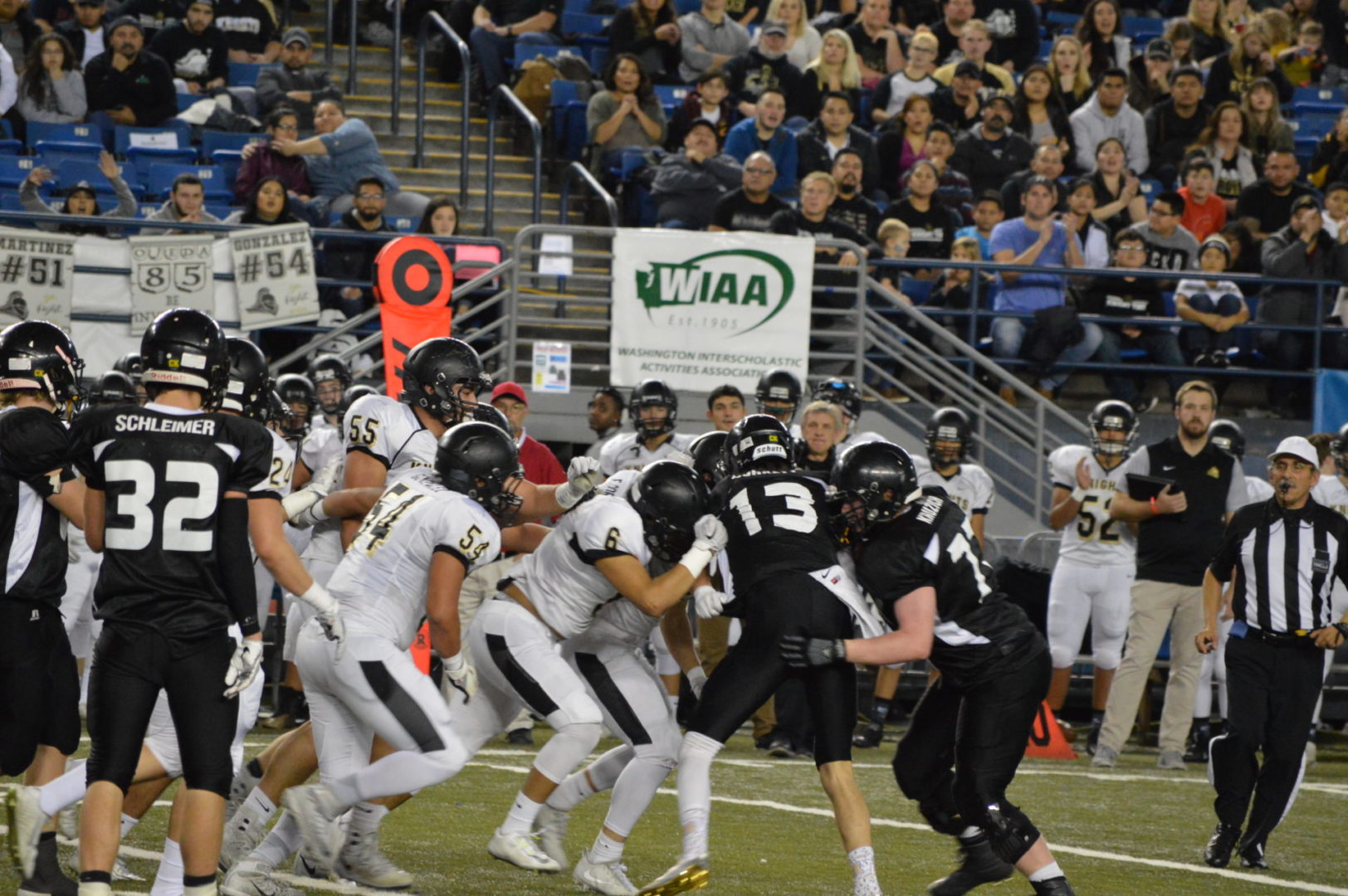1/6/2021
*** 1/7/2021 Update
The State Department of Health will gather the case information of COVID-19 on Friday and then post it on Monday, January 11. This will place each of the 8 Regions in either phase 1 or 2. Schools and leagues will then see the numbers and then understand the metrics they must reach to get into phase 2 or stay in phase 2 to allow Fall sports to begin on February 1.
The new plan will be easier for the Region’s to reach the minimum’s required since they are based on percent and not raw numbers of cases. The former plan required each of the 39 counties to reach an infection rate of 75 per 100,000 or less. The new plan groups counties together and seeks an overall 10% decrease. So for example if your Region on Friday has 10,000 cases combined then you have to decrease those number by 10% or 1,000 combined in the region to get to phase 2. More explanation is listed below.
(Renton, WA) The WIAA Executive Board was set to meet on Monday to further discuss the plan on re-starting High School sports. The meeting was postponed to Wednesday night after the Governor’s office informed the WIAA that new guidelines would be released on Tuesday. This would give some time for the board to look at the new guidelines and then try to adjust the re-start plans accordingly.

However, this was not a simple update of the guidelines. The Governor and State Health officials came out with a complete new plan that had the board had to first understand. Board President Tim Thomsen says in the end the Governor’s plan of 8 regions is going to reduce the load of each county having to meet individual mandates. Although more metrics were added into the process it spreads them out over more population.
According to the governor’s plan, for a region to move ahead to Phase 2, it will need to meet four metrics:
- A 10 percent decline in COVID-19 case rates over the past two weeks
- A 10 percent decrease in COVID-19 hospital admission over the past two weeks
- An ICU occupancy under 90 percent
- Test positivity of less than 10 percent
Under this plan with the new regions blended together, a relatively small spike in cases in a small population based county will now be mixed in with a much larger pool and not impact an individual county nearly as much. For example the West Region includes Thurston, Grays Harbor, Pacific and Lewis counties. Currently there are about 10,000 cases of Covid in that region with half in Thurston county and only 500 in Pacific county. So if Pacific county had an outbreak of say 100 new cases it would not be strictly counted against Pacific county and would be spread over the entire region and so if one of the other counties had a small dip it could easily make up for that one bad week.
The Region would have 2 weeks to drop those 10,000 cases down to 9,000 to meet the first benchmark. It would seem to reason that if metric 1 is reached then metric 2 is likely close. By making sure a large metro area is included in each region it will help with metric 3 of having enough ICU occupancy in the region and now a smaller county is not dependent on a single hospital. This plan is not based on simple raw data numbers such as 75 cases per 100,000 for each county but instead is focused on a percent decrease.
The State has not yet released phases 3 and 4 and so under phase 2 all outdoor sports, including high risk can be played. With that in mind it made sense to move Fall sports up to begin as early as February 1. Volleyball would be allowed in phase 2 because although an indoor sport it is classified as a medium risk sport. The new plan also makes it easier for schools to play each other because you can play any schools within your region since you all are in the same phase. Again, this takes the County Health departments out of the equation.
Thomsen says there was concerned for Eastern Washington schools that may have weather conditions that would not allow outdoor sports to start on February 1 so they can begin as late as February 23 which is only a couple of weeks prior to the traditional Spring sports season anyway. Plus the warmer winter we have already been experiencing may keep the door open for more to play earlier across the state.
Thomsen said that officially they have not cancelled post season or state tournaments but they are on the shelf for now. Thomsen says the WIAA can quickly organize such events if they have an opportunity. He says, “right now we’re trying to get the cake in the oven before we worry about the frosting.”
The sports available for those Regions in phase 2 include Football, Girls Soccer, Volleyball, Girls Swimming and alternative seasons for Gold and Tennis. The WIAA Board will meet again on January 19th to further update the February 1 start date and hopefully will have more information to make decisions about winter and spring sports. Thomsen also emphasized that they will keep open the option for leagues to do any sport at any time they are allowed under the phase plan. He says each league would need full agreement but the WIAA will not stand in the way of keeping anyone from having the chance to compete.
Under phase 2 there will no doubt be restrictions on fans attending but full details on what they will be allowed to offer is still being determined.
Thomsen emphasized that Region’s must reach these benchmarks to begin play so there is no guarantee but overall Thomsen says the board feels better about the chance to get sports back.
Thomsen joined us for an interview for our “Eli’s High School Report Overtime” podcast which will air at noon tomorrow for free on our ESN/NFHS network. The show will remain free to view on-demand after the noon showing. Here is the link to our broadcast page.
The WIAA Press Release
WIAA Executive Board Revises Season 1 Sports in Response to State Guidelines
RENTON, Wash. (Jan. 6, 2021) – The WIAA Executive Board voted to amend its season schedule on Wednesday, moving traditional fall sports to WIAA Season 1 while choosing to review Seasons 2 and 3 at its Jan. 19 meeting.
WIAA Season 1 will span seven weeks in length, beginning with pre-competition practices on Feb. 1 and ending on March 20. The sports scheduled for that season include cross country, football, golf (alternate), slowpitch softball, girls and 1B/2B boys soccer, tennis (alternate) and volleyball.
The change comes after Gov. Jay Inslee announced on Tuesday the “Healthy Washington — Roadmap to Recovery” plan which outlined a new set of guidelines and metrics for the resumption of education-based athletics and activities in Washington. Sports will maintain their previously assigned risk levels; however, the level of participation for each activity will vary in Phase 1 or Phase 2.
“The change in guidelines allow all traditional fall sports to be played in Phase 2 while we still do not have a clear pathway to the high risk indoor activities of basketball, competitive cheer and dance, and wrestling” said WIAA Executive Director Mick Hoffman. “With that in mind, moving fall sports to Season 1 will hopefully provide the most opportunities to participate.”
While the Executive Board will provide a uniform season schedule concluding in regional culminating events, it has granted each WIAA league or district around the state the ability to reschedule seasons to best fit their local communities.
WIAA staff will continue to work with the Department of Health to gain more clarity surrounding the guidelines that were issued on Jan. 5.
“We are hoping to receive more details that were not included in the Governor’s announcement on Tuesday, particularly surrounding indoor sports and activities,” Hoffman said. “As we continue to gather more information and evaluate the new metrics, the Board will be able to make better decisions about the remainder of the year.”
In addition to changing the sports scheduled for WIAA Season 1, the Board voted to extend the open coaching period at each school up until the day before the first season begins at that school.
www.elisportsnetwork.com










